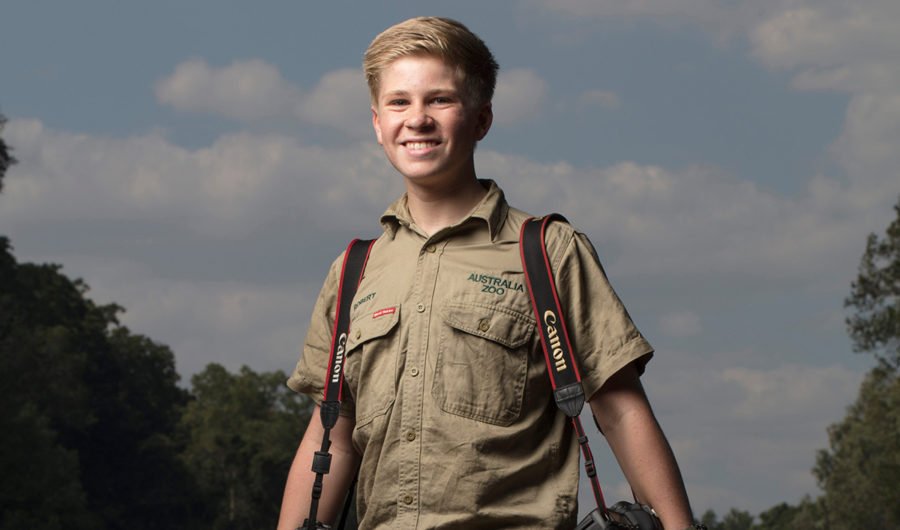Robert Irwin on continuing his father’s legacy through his wildlife photography

UNLIKE HIS father Steve — who’s famous for the odd underwater, muddy tumble with huge Australian crocodiles — his son Robert prefers a different kind of challenge when it comes to wildlife conservation. “Sometimes it requires a lot of patience to capture images of wildlife,” Robert says. “In some situations I’ve had to wait for days to get just one good shot.” And he’s also braved some intense weather conditions. “I’ve photographed through all kinds of weather from monsoonal rain to snow storms to photograph animals. Sometimes the most extreme conditions can showcase the struggle that all creatures face to survive in the wild.”

(Image Credit: Robert Irwin)
While according to Robert, Steve dabbled in photography, he’s clearly forging his own path through the medium. “I’ve always been passionate about wildlife and conservation. When I was about 6-years-old I started taking photos on a little point-and-shoot camera. From there, my love of photography developed and now I take my camera gear with me everywhere.” Having grown up in the middle of Australia Zoo, surrounded by wildlife, Robert certainly has a competitive edge in that he isn’t easily intimidated by Australia’s more fearsome creatures.

(Image Credit: Robert Irwin)
“I’m particularly proud of my image of a spotted python that I took on the Steve Irwin Wildlife Reserve on Cape York Peninsula. We found the young snake on a termite mound and he didn’t mind us getting quite close to him. I used a studio flash and after a while, I managed to get a photo of the snake with his tongue out, looking directly at the camera,” he says. The image, which truly transports you into the belly of the beast, was subsequently shortlisted in this year’s Australian Geographic Junior Nature Photographer of the Year category. Robert says however, that his image of the last male northern white rhinoceros characterises what he wishes to achieve with his photography.

(Image Credit: Robert Irwin)
“One of the most moving experiences I had was when I photographed the last male northern white rhinoceros. We have a conservation project with wild black rhinos at the Ol’ Pejeta Conservancy in Kenya and we recently travelled there. The Conservancy is also home to the last three northern white rhinos in existence, so it was incredible to see the last male, named Sudan. It was a very sad experience. Through the images that I took I hope to address the issue of poaching, which has brought so many species to extinction.”

(Image Credit: Robert Irwin)
Last week the Irwins and the network Animal Planet, which originally screened The Crocodile Hunter documentary series, announced that the family would be making a return to television screens, but are yet to confirm the exact format of the show. “We are so excited to be returning to Animal Planet. I am really looking forward to some fun filming projects next year and I would certainly love to showcase my photography pursuits,” Robert says.
And he has some big travel plans. “I’ve always wanted to photograph the amazing Komodo dragons of Komodo Island. My dad had travelled there while filming a documentary and had some amazing encounters with the huge lizards. Antarctica and South America would have to be on my list as well, with so many incredible animal species in both locations.”
Beyond his nature and wildlife photography, Robert also has a keen interest in cityscapes and urban architecture.
“While wildlife and nature photography is my main passion, I have also started doing more street and architecture photography. I absolutely love getting out into nature and exploring our natural world and occasionally, when our travels bring us to a big city, I really enjoy capturing city life. That style of photography is something I would like to pursue into the future.”

(Image Credit: Robert Irwin)
You can see more of Robert’s photography HERE.
READ MORE:
- Irwins to continue Steve’s legacy by making a return to Animal Planet.
- Terri Iwin talks about the Steve Irwin Wildlife Reserve.
- Steve Irwin’s legacy lives on in Cape York.
- Croc catching on the Steve Irwin Wildlife Reserve.

